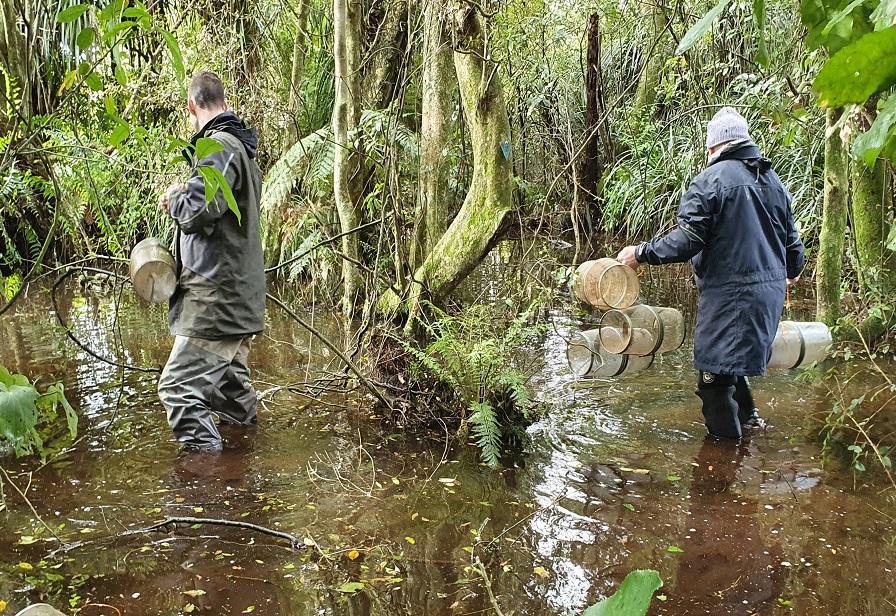Standing knee deep in a swamp on a chilly spring morning may not be everyone’s idea of fun, but for Taranaki Regional Council’s biodiversity officers, ecologists and freshwater scientists, it’s the stuff they live for.

A recent highlight for our team was mudfish monitoring at a South Taranaki wetland. This 1.8ha wetland is a remnant of a peat swamp that once covered about 1,200ha, but over the years has been almost completely drained. It is home to an abundant population of the native brown mudfish/hauhau/waikaka/kōwaro, classifed as ‘At risk – threatened’ under the NZ Threat Classification System. The wetland is also part of our Key Native Ecosystem (KNE) programme, which means we’ve supported the landowner to continually improve the habitat through fencing and planting.
The Council monitors mudfish at this site every three years. This involves setting 20 minnow traps at the same locations each time. We return in the morning to count and measure the mudfish we have caught, before releasing them. This year we saw plenty of juveniles, a great sign of a healthy population. It’s fantastic to see the landowner’s work paying off.
The protection and restoration of our native species, particularly those threatened or at risk, is a core component of the Council’s work. Our KNE programme currently has 359 sites of regional significance, which are home to valuable native flora and fauna. The implementation of Biodiversity Plans at these sites give native species the best chance to thrive.
If you are interesting in learning more about the Council’s environmental work and the state of biodiversity in Taranaki, go to www.trc.govt.nz/state-of-the-environment-report-2022/(external link).